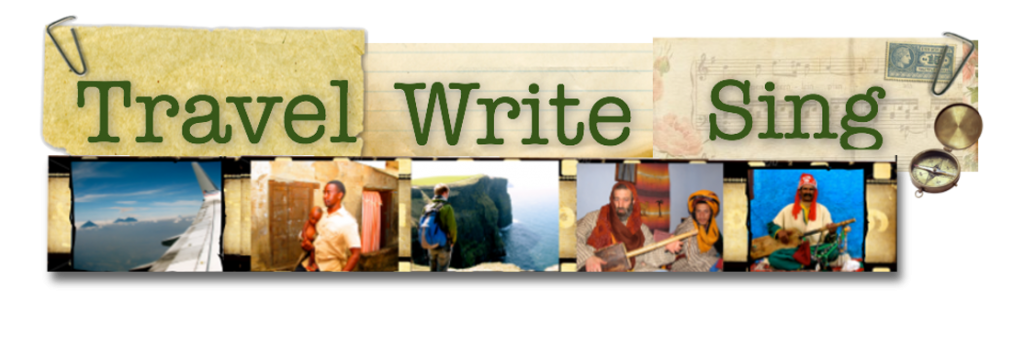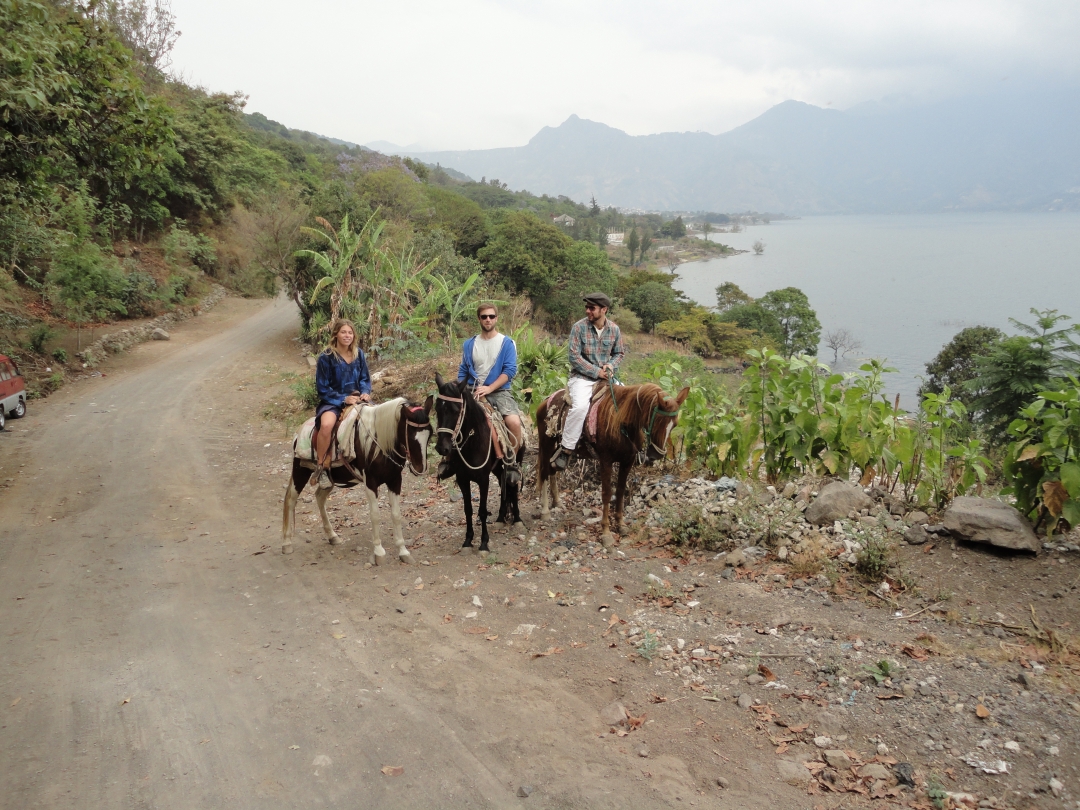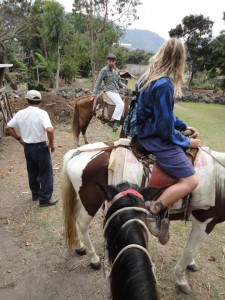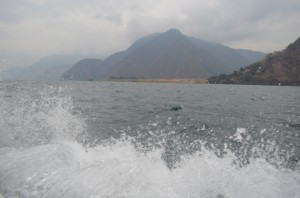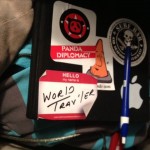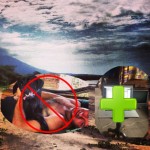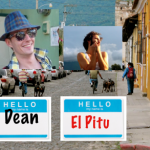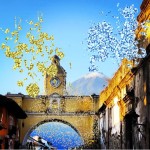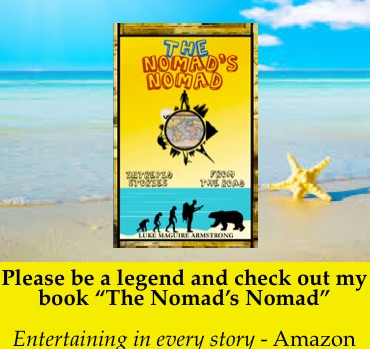Originally published in Range Magazine. Photo Credits: Matt Stabile.
Though I grew up in North Dakota, a place with a Western history or rough riders, it was abroad, galloping on the back of Flaca that I discovered one spirit of the West I’d never found at home.
The other horses had a healthy robustness that said, “Bring it on life.” My horse, Flaca was a ragged hide stretched over the rickety frame of her bones. Her name aptly translates to “Skinny-bones.” When I heaved myself onto her, she let out a muttering breath that seemed to express a resignation to the endless cycle of tourists visiting Guatemala’s lake-side village of San Pedro Atitlán who were willing to pay $4/hr to ride her.
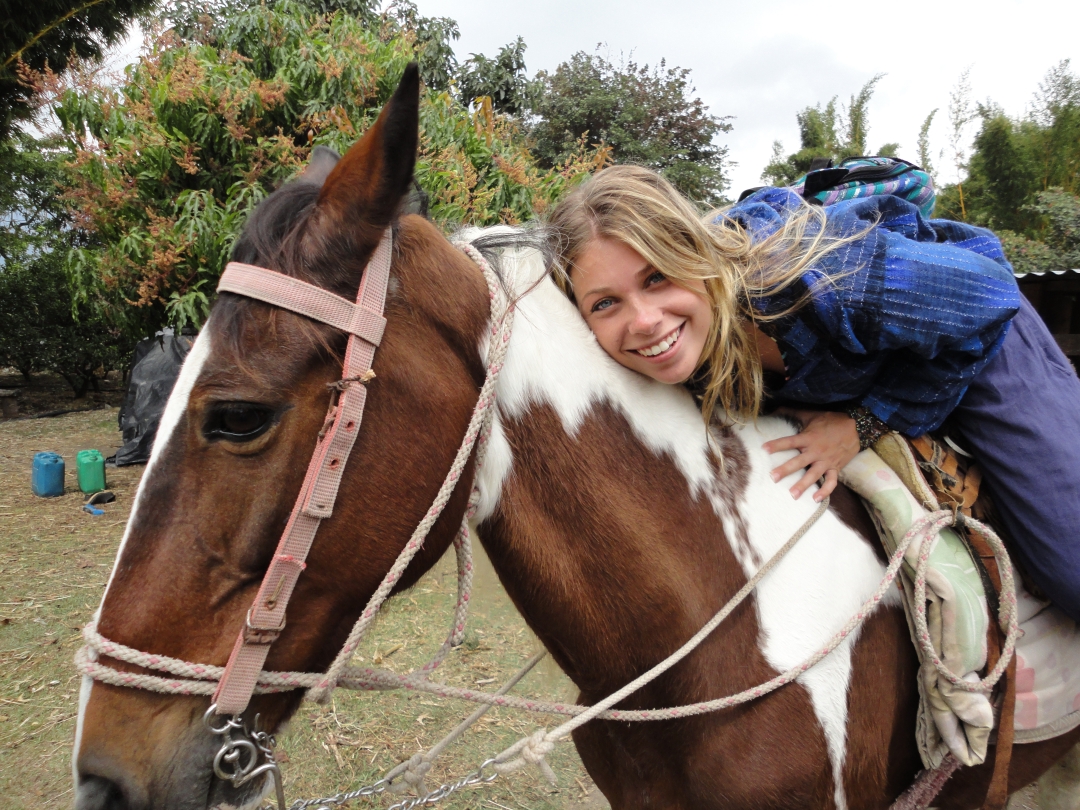 What Flaca and I had in common was that neither of us wanted to go horseback riding. My visiting friend from New York had talked me into it. “Let’s go horseback riding” he said, “It’s on me.” I’d been horseback riding before, found it tame, and put it on the list of touristy things I avoided.
What Flaca and I had in common was that neither of us wanted to go horseback riding. My visiting friend from New York had talked me into it. “Let’s go horseback riding” he said, “It’s on me.” I’d been horseback riding before, found it tame, and put it on the list of touristy things I avoided.
Atop Flaca, I learned that though I had been on the backs of horses, I’d only ever been horseback walking. Shortly into the ride, I felt like we should have signed waivers. If Guatemala were a country where the word “liability” existed in the collective vocabulary, there would have been some serious safety talk-age before mounting.
After a brisk trot from the stables to San Pedro’s main street, our Guatemalan guide yelled a command and something wild erupted inside Flaca. Minutes ago she seemed the kind of horse who would be into Poe and black skinny jeans. But on command, a reckless energy sparked and we broke into a terrifying gallop.
The world changes depending on where you see it. From the mount of a soaring horse, the sleepy village of San Pedro wakes up. It turns into a riveting panorama of adrenaline infused excitement. The others in my group and all looked equally uneasy with the suicidal pace of our horses. “This is fun,” I reminded myself, fairly certain that bones were about to be broken.
When my right shoe grazed a tree and Flaca overcompensated by almost crashing into a honking truck, I told myself that Flaca was a professional. She had been taking gringos on enthralling rides through the hills her entire life. I tightened my grip on the reigns and focused.
Consciously, I moved my awareness from holding on to what was unfolding around me. We dashed past tourists, street dogs, expats, taxi drivers, Mayan women in colorful dresses. Soon we left the town and raced up dirt roads on the outskirts. On my left was the volcano born lake Atitlan—the deepest in Central America. Surrounding that were three volcanoes—one active—bordering green hills that hid the lake from the surrounding high lands.
Midway through our ride we paused to pose for photos on a cliff that gave an unbroken view of the scenery below. When we headed back towards town, I felt an urge to break free. Having found my balance atop of Flaca, maybe it was her racing wildness that unbridled me. Before I thought it through, I patted my Flaca on her hind quarter and we broke into a full-speed gallop, past the group, past the guide, off alone into the hills.
The last thing I heard my guide say was, “Slow down!” But by the time his words reached me, they were from a place already long gone.
Now it was just Flaca and man. The galloping that had brought anxiety now gave me liberation. Together we raced over new roads, free of the invisible reigns of rules that had kept us on designated trails under the supervision of our guide.
I hold onto Flaca best I can and her movements feel like my movements. The divide separating our bodies narrows with every racing second. I stroke behind her ears, which are now covered in warm perspiration. I beckon lightly with the reigns and she turns wherever my whims take us.
I pass more Mayan women, some with baskets on their heads, others with young children slung from their backs and older children grasping onto their mother’s hands. “Hola!” I wave to Mayan men carrying wood, tools, sacks of who-knows-what and a lifetime of memories from here—many good, some from the war torn years too painful for an outsider like me to understand.
When we reenter San Pedro, it feels like we enter it from a different place on history’s timeline. This is how the Spanish Conquistadors arrived half a millennium ago. Horseback used to be the best way to get from point A to point B. A part of me wishes traveling was still this untamed.
After a few wrong turns, I let Flaca do the navigating. Soon we are walking leisurely up the alley connecting the stables from the main road. We slow to a brisk trot and our starting point comes into view. The rest of the group looks at me with amused expressions as we rejoin them. The guide isn’t upset, just relieved his horse and her rider have returned without further incident.
I dismount and run my hand across Flaca’s long face, thanking her for giving me a gift I didn’t know I wanted. Leaving your tour group probably ranks high on the list of things not to do on a guided tour. But if I could do it again I would not pass the chance to fly so freely across the hills surrounding Lake Atitlan, discovering the landscape like the West was won.
